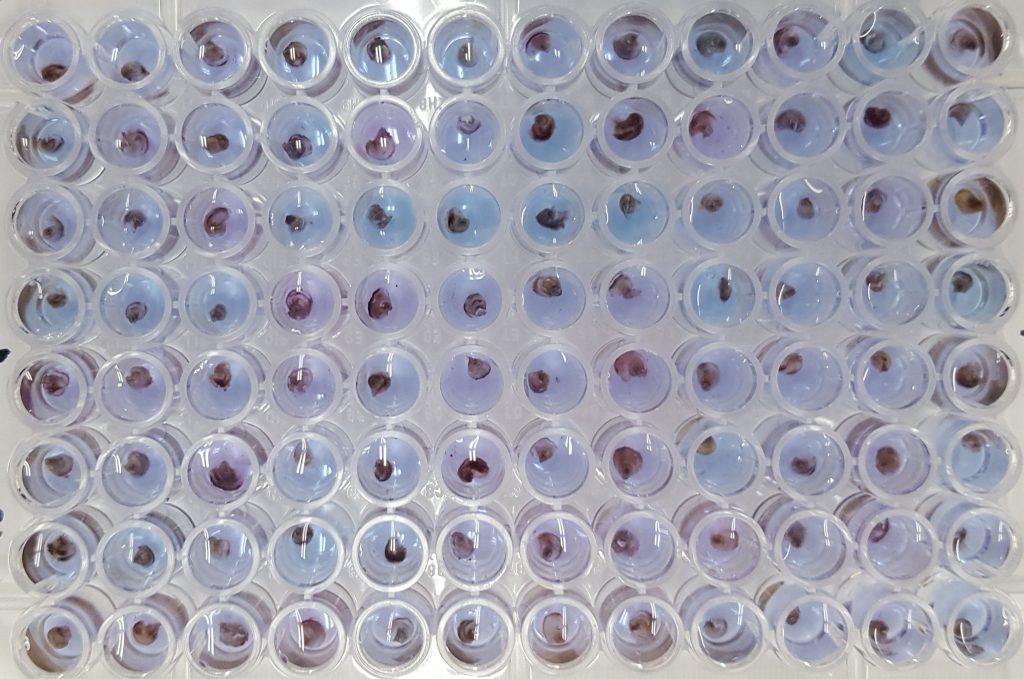

Ryabushko added that commercial use of their technology would cut the cost of oyster production in Russia, as well as reduce risks of closing companies “due to the changing geopolitical situation.” The survival rate of oysters is about 70 per cent – similar to that at the farms in the Atlantic and Mediterranean,” Ryabushko said. The spat will grow rapidly and is visible to the naked eye within ten to 14 days. predators such as fish, and must allow the oysters to be easily removed without damage. The buoy is one of the first devices of its type in France, but after its first contact with this new technology, the shellfish farming sector is already thinking of measuring additional parameters, such as chlorophyll and pollutants.“Experimental cycles of spat growing in Crimea have shown that if you start the process in mid-spring, then the age at which oysters settle and become suitable for transfer further to grow into mollusks-like-state come about six months later. 1) Spat collection 2) On-growing 3) Harvesting.

The Auray-Vannes FLAG played a key role by supporting the application for CLLD funding and coordinating the project partners. This would in turn lead to more efficient spat collection and increased oyster production. This method is in contrast to single oyster seed production (cultchless) where the result is individual oysters grown out.
OYSTER SPAT GROWING HOW TO
Through this program, Accurso has learned not only to like the briny taste of Peconic Bay oysters, but how to grow them. on increasing the marketability of adult oysters by reducing spat fouling. Fittingly named after the word for juvenile oysters, SPAT was designed to encourage community members to take part in restoring shellfish to the bays.

This would allow them to analyse the changes in the oyster’s natural environment and work out the best time to collect the spat. Figure 4: Oyster spat settlement on (a) commercial spat sticks, (b) PVC coated. There is no way to fast-track an oyster’s journey from spat to shelled delicacy.
OYSTER SPAT GROWING INSTALL
Hence, the Regional Shellfish Farming Committee of South Brittany submitted a project proposal to install a high-frequency multi-sensing buoy to gather data on these parameters. Spat are sepa- rated from artificial substrates at a very early age and grown in trays and tanks without cultch until large enough to plant on beds. Studies carried out locally by the national marine research institute Ifremer linked environmental conditions, such as temperature and salinity, to oyster spawning, which directly impacts spat settlement quality and quantity. Oyster spat grow considerably more quickly to a saleable seed size than do spat of the various commercial clams and scallops. Oyster spawning is becoming less predictable, which is making it harder to collect spat for cultivation. Nursery: the area where young oyster spat/seed will grow out to a larger but still. The wild oyster stocks, the main source of spat for breeding this species in captivity, are increasingly threatened by climate change and human action, which worsen water quality and give rise to large temperature fluctuations. Aquaculture: the farming of aquatic organisms for human consumption. In France, the two main flat oyster collection areas are Brest Bay and Quiberon Bay, both in Brittany. This creates tiny larvae, which after 2-3 weeks grow legs and ‘settle’ by attaching themselves to a solid surface, where they are known as ‘spat’. This year a record-breaking 13 percent of larvae attached to shells in the barges’ tanks, resulting. In a typical year, only about 10 percent of oyster larvae actually attach to shells, while the rest succumb to natural causes. Oysters breed by releasing their eggs and sperm into the water, where fertilisation takes place. As the baby oyster spat grow, each shell can become home to 10 or more oysters that are planted on restoration reefs.


 0 kommentar(er)
0 kommentar(er)
